The big, the bold, the beautiful...
Despite all these genera only a few types of irids have enjoyed prolonged popularity in the garden. With the help of the internet and organizations like the Pacific Bulb Society, other genera are making inroads into the mainstream. Another factor has been increased interest in locally native wildflowers. So even native plant societies are helping to promote irids.
The heavyweights are Crocus, Crocosmia, Freesia, and Gladiolus.
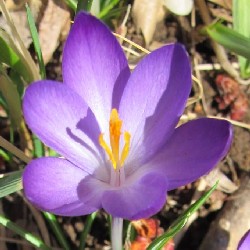 Crocus is a large genus consisting of 90 species. Some species come from the mild Mediterranean region. Others come from temperate climates in Europe and central Asia. This diversity provides lots of options for gardeners around the world to find something suitable for their gardens. An ever increasing number of hybrids gives us even more choices. Crocus are often categorized based on their bloom time: autumn, winter, spring. They can often be the first and/or last plants to bloom in your garden depending on which varieties you grow. The most famous species is C. sativus, commonly known as saffron.
Crocus is a large genus consisting of 90 species. Some species come from the mild Mediterranean region. Others come from temperate climates in Europe and central Asia. This diversity provides lots of options for gardeners around the world to find something suitable for their gardens. An ever increasing number of hybrids gives us even more choices. Crocus are often categorized based on their bloom time: autumn, winter, spring. They can often be the first and/or last plants to bloom in your garden depending on which varieties you grow. The most famous species is C. sativus, commonly known as saffron.
Do not confuse Crocus with Colchicum. They are different! They look similar and their native ranges overlap heavily, but they are different! Colchicum belong to the Family Colchicaceae, not Iridaceae, therefore Colchicum are not irids.
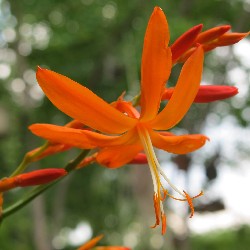 Crocosmia is a small genus with only 8 species, but with hundreds of stunning hybrids. Although they originate from mild parts of Africa they are surprisingly hardy in colder climates. Some hybrids have proven to be invasive pests in the U.K., New Zealand, Australia, and parts of the U.S.A.
Crocosmia is a small genus with only 8 species, but with hundreds of stunning hybrids. Although they originate from mild parts of Africa they are surprisingly hardy in colder climates. Some hybrids have proven to be invasive pests in the U.K., New Zealand, Australia, and parts of the U.S.A.
Once known as Montbretia, some catalogs still refer to them as such. But nowadays the correct genus name is Crocosmia. One of the most famous cultivars is called 'Lucifer'. It forms tall spikes of bright red flowers that are attractive to hummingbirds in North America. Other popular cultivars are 'Emberglow', 'Meteor', and 'Solfaterre'. Shown here, at left, is a cultivar called 'High Light'. The color range of all species and hybrids are limited to vibrant shades of yellow, orange, and red. Heights vary from about 1 to 3 feet.
 Freesia is a medium sized genus with about 16 species all of which come from southern and eastern Africa. Hybrids have been cultivated since the 19th century and today Freesia hybrids are important business for the global floral & scent industries. Double-flowered and single-flowered varieties are available in a wide range of colors.
Freesia is a medium sized genus with about 16 species all of which come from southern and eastern Africa. Hybrids have been cultivated since the 19th century and today Freesia hybrids are important business for the global floral & scent industries. Double-flowered and single-flowered varieties are available in a wide range of colors.
Unfortunately Freesia are not cold hardy so they require protection if grown in places with cold winters. They can be lifted and stored cool & dry over winter, or they can be treated as annuals and replaced each season. Hybrid corms from the supermarket are inexpensive making that a viable option for some gardeners.
Hachijo-jima Island in Japan celebrates an annual Freesia festival where visitors can walk amongst huge fields of Freesia in bloom. The festival runs for several weeks from late March to early April.
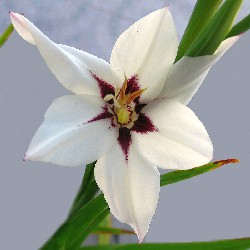 Gladiolus is a genus that rivals Genus Iris for being widespread and containing many species. Gladiolus has roughly 260 species ranging from Madagascar to central Europe to southwestern Asia. However, almost all of these species are native to sub-Saharan Africa.
Gladiolus is a genus that rivals Genus Iris for being widespread and containing many species. Gladiolus has roughly 260 species ranging from Madagascar to central Europe to southwestern Asia. However, almost all of these species are native to sub-Saharan Africa.
A plethora of hybrids are readily available at supermarkets each spring, usually in big bags of dormant corms. The flowers come in pretty much every possible color and height. In mild climates the corms can be left in the ground year round, but in colder climates it's best to lift them in the winter.
There are Gladiolus societies throughout North America, Europe, and Russia. The North American Gladiolus Council maintains the international registry for cultivars.
The up-and-comers...
Some of the genera enjoying recently new popularity include Babiana, Chasmanthe, Dierama, Dietes, Ixia, Ferraria, Moraea, Neomarica, Romulea, Sisyrinchium, Sparaxis, and Tigridia.
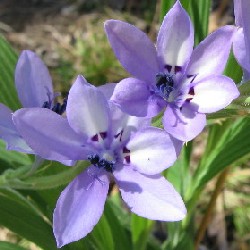 ⚜
⚜ 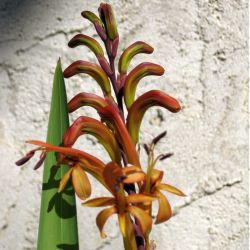 ⚜
⚜ 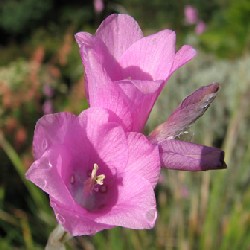
 ⚜
⚜ 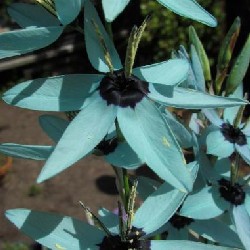 ⚜
⚜ 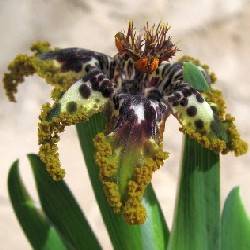
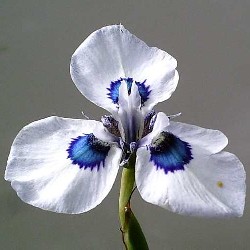 ⚜
⚜ 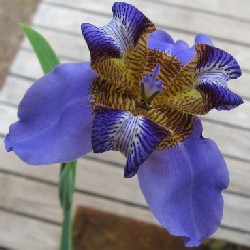 ⚜
⚜ 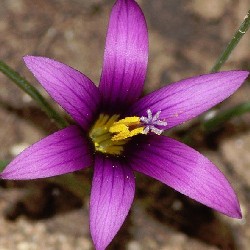
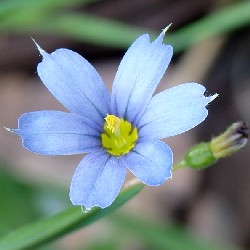 ⚜
⚜ 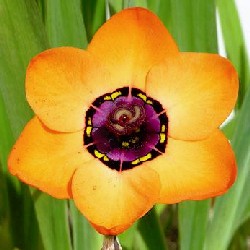 ⚜
⚜ 
If you think any of these sound intriguing, hopefully you'll try a new irid or two in your own garden.
[Continue reading about the Genus Iris...]
 Species Iris Group of North America
Species Iris Group of North America